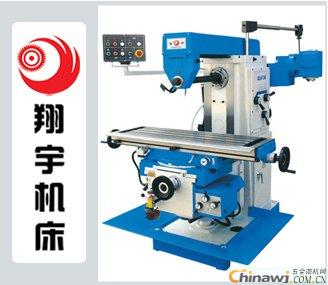1. Before operating a vertical milling machine, it's essential to complete all necessary preparations to ensure smooth and accurate processing.
The pre-processing steps include checking the milling machine, organizing the work area, understanding the design drawings and process specifications, inspecting the workpiece blanks, determining the clamping method, and preparing the cutting tools, instruments, and measuring devices.
(1) Machine Inspection: Before starting, check the positions of all machine components, ensuring that each feed handle is in the "neutral" position. Lubricate the machine according to the manufacturer’s guidelines, then run it at low speed for about three minutes to test its performance. Listen for any unusual noises from the main spindle gear box or feed gear box, and confirm that the table moves smoothly in all directions and that the oil pump functions properly.
(2) Worksite Organization: A clean and organized workspace improves efficiency and reduces accidents. Ensure that the work area is tidy, with clear separation between raw materials, semi-finished products, and finished goods. Minimize unnecessary movement by arranging items logically. Keep the surrounding area free of debris to prevent tripping hazards.
(3) Understanding Drawings and Procedures: Familiarize yourself with the workpiece drawings, paying attention to dimensions, tolerances, surface finish requirements, and other technical specifications. If anything is unclear, consult a technician before proceeding.
(4) Checking Workpiece Blanks: Inspect the size of the workpiece blank against the drawing. Sort them based on machining allowance and count them accordingly. Clean any casting sand, welding slag, or burrs to avoid defects caused by poor inspection. For parts coming from previous processes, verify their condition against the drawings and process cards. Report any discrepancies immediately.
(5) Clamping Method: Choose an appropriate clamping method depending on the shape and requirements of the workpiece. Straighten long or curved materials before clamping. Larger pieces should be measured and positioned carefully to prevent deformation or improper clamping.
(6) Tool Preparation: Prepare the cutting tools, instruments, and measuring devices before starting. Place them in convenient locations but not on the machine guide surfaces to reduce search time and improve efficiency. Verify that measuring instruments are accurate by comparing them with calibrated gauges before use.
2. Safety in Milling Operations
Ensuring operational safety and maintaining a clean, professional work environment are crucial for preventing accidents. Follow these safety guidelines:
1. Wear proper work attire—no open shirts, shorts, scarves, slippers, or high heels. Roll up sleeves and secure cuffs. Female workers must wear a head covering and keep hair tied back to avoid entanglement with moving parts. Never wear gloves when operating the machine.
2. Keep your head away from the cutting area. Avoid touching the rotating cutter or the workpiece near it. Use an iron hook to remove chips, as they can be sharp and dangerous.
3. Do not wipe moving parts like the workpiece or cutter with cloth. Stop the machine before measuring, and never measure while cutting.
4. When performing high-speed milling, always wear eye protection.
5. Secure tools, workpieces, and measuring devices in stable positions to prevent falling. Ensure the workpiece is firmly clamped to avoid loosening during operation.
6. When handling heavy objects like the workpiece or indexing head, ask for assistance or use lifting equipment. Never attempt to do it alone.
7. When using a grinding wheel, stand to the side to avoid injury if the wheel breaks.
8. Never remove protective covers from the machine, as this can expose belts, gears, and other moving parts, increasing the risk of injury.
9. Use only 36V low-voltage lighting on the milling machine and follow electrical safety protocols.
10. Avoid distractions while operating the machine. Always turn it off before leaving the workstation.
This article discusses: vertical milling machine http://

Carriage Bolt DIN603,stainless steel Slotted bolt, white Square bolt,carbon steel Carriage Bolt
Hebei Quanfang Fastener Co., Ltd , https://www.quanfangfastener.com